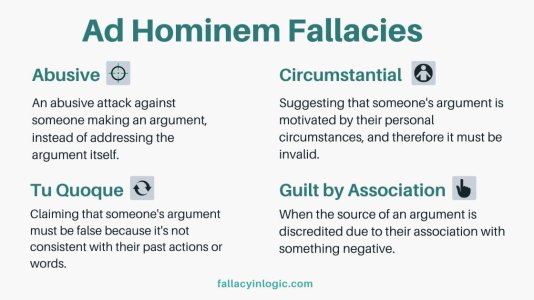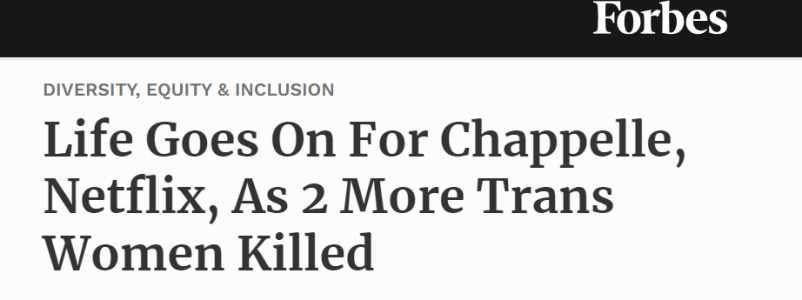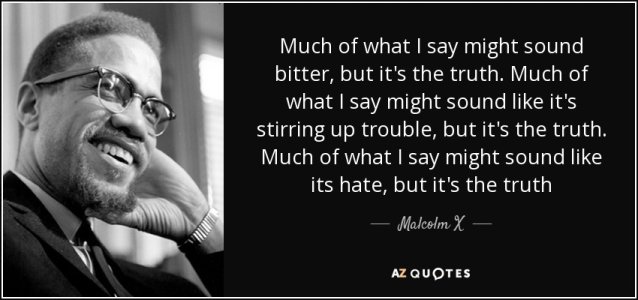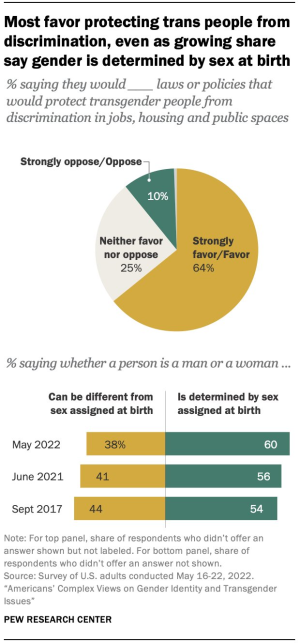When Semantics Dominate Civics Every so often, C-SPAN captures the shortcomings of American civic discourse particularly clearly. On Tuesday, during a televised Senate Judiciary Committee hearing
on abortion access and the law, Senator Josh Hawley, a social conservative from Missouri, sparred with the UC Berkeley law professor Khiara M. Bridges, who studies race, class, and reproductive rights. If you follow left-of-center media, you may have heard about the exchange via headlines like these:
HuffPost: “Professor Schools Sen. Josh Hawley for His Transphobic Questions in Abortion Hearing”
Above the Law: “You *Have* to Watch This Law Professor SHUT DOWN Senator Josh Hawley”
New York magazine: “Josh Hawley Called Out as Transphobic in Senate Hearing”
Jezebel: “Berkeley Law Professor Eviscerates Sen. Josh Hawley at Post-Roe Hearing”
Inside a “blue” bubble, it would be easy to assume that Senator Hawley had had a bad day. Yet Hawley, for his part, did his utmost to make sure that same exchange reached as many people as possible. He
appeared on the Fox News Channel in prime time to discuss the viral moment, amplified the efforts of numerous right-leaning media figures to publicize it, and
tweeted out a video clip to his 894,000 Twitter followers. “The Democrats say what they really think: men can get pregnant and if you disagree, you are ‘transphobic’ and responsible for violence,” he wrote. “For today’s left, disagreement with them = violence. So you must not disagree.” Inside a “red” bubble, it would be easy to assume C-SPAN caught “
woke insanity,” as
The Daily Wire put it.
How is it that both the populist left and the populist right, though utterly at odds with each other on abortion and trans rights, both considered this same 1-minute-and-50-second-long clip a victory?
Let’s go to the transcript for some insights. As it starts, two people begin a lengthy exchange about women––yet neither finds it useful, for their purposes, to clarify how they define that word.
Senator Hawley: Professor Bridges, you said several times––you’ve used a phrase, I want to make sure I understand what you mean by it. You’ve referred to “people with a capacity for pregnancy.” Would that be women?
Professor Bridges: Many women, cis women, have the capacity for pregnancy. Many cis women do not have the capacity for pregnancy. There are also trans men who are capable of pregnancy, as well as nonbinary people who are capable of pregnancy.
Hawley does not earnestly need clarification. He is grandstanding. He knows what Bridges means by “people with a capacity for pregnancy” and why she uses that formulation: because she wants to be inclusive of trans men, which is to say, people born with female reproductive organs who now identify as men, but who retain the ovaries and uterus that permit them to become pregnant. He pushes for clarification to highlight her choice to use trans-inclusionary language, knowing her diction is discordant to many Americans and controversial in her own coalition.
Why does her approach divide the left? The blue coalition is enmeshed in
a fraught disagreement between abortion-rights proponents who believe semantically centering women––the group most disproportionately affected by bans on abortion––is
substantively and politically important, and abortion-rights proponents who believe that switching to more inclusive language is morally important and takes nothing away from women.
Read: The domino effects of new anti-abortion laws
Hawley saw an opportunity. Having forced Bridges to highlight a polarizing stance that divides her coalition, he sought to press his advantage by characterizing Bridges as saying that abortion isn’t a women’s issue.
Hawley: So this isn’t really a women’s-rights issue, it’s a––
Bridges: We can recognize that this impacts women while also recognizing that it impacts other groups. Those things are not mutually exclusive, Senator Hawley.
Hawley: Alright, so your view is that the core of this right, then, is about what?
This is where Bridges, knowing she is pinned down on hostile terrain, pivots to something likely to unite her coalition, though as we’ll see, it was equally likely to unite Hawley’s coalition:
Bridges: So, um, I want to recognize that your line of questioning is transphobic and it opens up trans people to violence by not recognizing them.
Hawley: Wow, you’re saying that I’m opening up people to violence by asking whether or not women are the folks who can have pregnancies?
Bridges: So I want to note that one out of five transgender persons have attempted sucide, so I think it’s important––
Hawley: Because of my line of questioning? So we can’t talk about it?
Bridges: Because denying that trans people exist and pretending not to know that they exist––
Hawley: I’m denying that trans people exist by asking you––
Bridges: Are you? Are you?
Hawley: ––if you’re talking about women having pregnancies?
Bridges: Do you believe that men can get pregnant?
Hawley: No, I don’t think men can get pregnant.
Bridges: So you’re denying that trans people exist!
Hawley: And that leads to violence? Is this how you run your classroom? Are students allowed to question you or are they also treated like this, where they’re told that they’re opening up people to violence––
Bridges: We have a good time in my class. You should join. You might learn a lot.
Hawley: I would learn a lot. I’ve learned a lot just in this exchange. Extraordinary.
Both participants conducted that exchange in ways that were likely to earn praise from their ideological allies and contempt from their opponents while generating far more heat than light. Bridges shifted into attack mode and characterized Hawley as a dangerous bigot, generating praise from media leftists while guaranteeing that Hawley would be seen by many as a victim of an unfair attack. After all, neither evidence nor common sense suggests that questions like Hawley’s––questions attempting to bait a progressive into publicly saying that abortion
isn’t a women’s issue––contribute to trans suicides. (What’s more, no research that I’m aware of connects suicides among
any group to discourse of this sort, which is to say, general legislative debate as opposed to bullying an individual. If the journalists at
HuffPostand beyond who endorsed Bridges’s claims truly believed Hawley’s words here would contribute to suicides, would they really have helped turn them into a viral video clip, taking something that aired on C-SPAN and deliberately exposing it to a much larger audience?) And for all of Hawley’s wrongheaded antagonism to LGBTQ rights, the locution that he is “denying that trans people exist” doesn’t capture his actual position.
Hawley knows that some people who were born with ovaries and a uterus now identify as trans men. He is averse to simply calling them “men” and to the formulation “men can get pregnant,” at least in part because men, as he defines it, is about sex, not gender. That is to say, men is the word Hawley uses to refer to people born with penises, testicles, and one Y chromosome. In contrast, Bridges is averse to the formulation “only women can get pregnant” because men as she defines it is about gender identity.
I expect both know that Americans have long failed to disentangle sex and gender, and that many people use words like man and woman, boy and girl inconsistently, sometimes referring to sex and other times to gender and still other times to a mix, often without thinking the matter through. If you asked me, “Do you think a man can be pregnant?” I’d answer, “If you define a man as someone with a penis, testicles, and a Y chromosome, no. If you define man as an identity that corresponds to an internal sense of felt gender, then yes. Before I can answer in a way that allows us to actually understand one another, I need you to know how you define man.”
Instead of modeling a constructive exchange by clarifying their own terminology, Hawley and Bridges talk past each other––mutually aware all the while that they are talking past each other––portraying each other as bigoted and crazy, respectively, for failing to mirror the other’s statements about men and women, when in large part the disconnect boils down to different definitions. To find agreements, all they have to do is use more words.
Can a person with a beard, ovaries, and a uterus get pregnant? Maybe! Can a person with no uterus and one Y chromosome get pregnant? Never. Hawley and Bridges likely agree on all that and more. Their important disagreements on LGBTQ issues concern rights and liberties, not semantics. As for the ostensible subject of the hearing, “abortion access and the law”? Nothing about that went viral

www.reuters.com




































